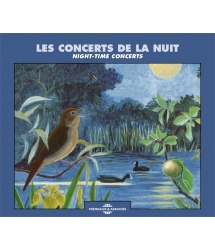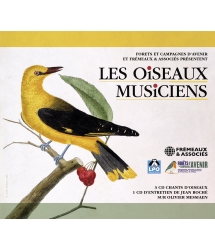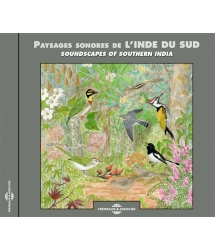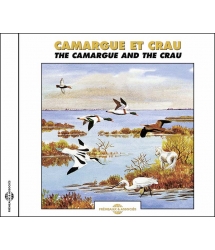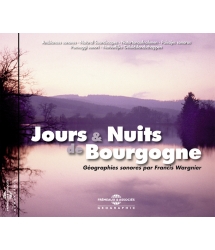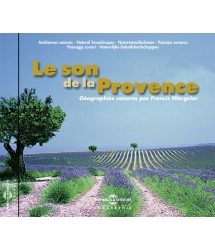- Our Catalog
- Philosophy
- Philosophers of the 20th century and today
- History of Philosophy (PUF)
- Counter-History and Brief Encyclopedia by Michel Onfray
- The philosophical work explained by Luc Ferry
- Ancient thought
- Thinkers of yesterday as seen by the philosophers of today
- Historical philosophical texts interpreted by great actors
- History
- Books (in French)
- Social science
- Historical words
- Audiobooks & Literature
- Our Catalog
- Jazz
- Blues
- Rock - Country - Cajun
- French song
- World music
- Africa
- France
- Québec / Canada
- Hawaï
- West Indies
- Caribbean
- Cuba & Afro-cubain
- Mexico
- South America
- Tango
- Brazil
- Tzigane / Gypsy
- Fado / Portugal
- Flamenco / Spain
- Yiddish / Israel
- China
- Tibet / Nepal
- Asia
- Indian Ocean / Madagascar
- Japan
- Indonesia
- Oceania
- India
- Bangladesh
- USSR / Communist songs
- World music / Miscellaneous
- Classical music
- Composers - Movie Soundtracks
- Sounds of nature
- Our Catalog
- Youth
- Philosophy
- News
- How to order ?
- Receive the catalog
- Manifesto
- Dictionnary











- Our Catalog
- Philosophy
- Philosophers of the 20th century and today
- History of Philosophy (PUF)
- Counter-History and Brief Encyclopedia by Michel Onfray
- The philosophical work explained by Luc Ferry
- Ancient thought
- Thinkers of yesterday as seen by the philosophers of today
- Historical philosophical texts interpreted by great actors
- History
- Books (in French)
- Social science
- Historical words
- Audiobooks & Literature
- Our Catalog
- Jazz
- Blues
- Rock - Country - Cajun
- French song
- World music
- Africa
- France
- Québec / Canada
- Hawaï
- West Indies
- Caribbean
- Cuba & Afro-cubain
- Mexico
- South America
- Tango
- Brazil
- Tzigane / Gypsy
- Fado / Portugal
- Flamenco / Spain
- Yiddish / Israel
- China
- Tibet / Nepal
- Asia
- Indian Ocean / Madagascar
- Japan
- Indonesia
- Oceania
- India
- Bangladesh
- USSR / Communist songs
- World music / Miscellaneous
- Classical music
- Composers - Movie Soundtracks
- Sounds of nature
- Our Catalog
- Youth
- Philosophy
- News
- How to order ?
- Receive the catalog
- Manifesto
- Dictionnary
(AMBIANCES NATURELLES)
Ref.: FA5305
EAN : 3561302530529
Author : FREMEAUX & ASSOCIES
Artistic Direction : FRANCIS WARGNIER
Label : Frémeaux & Associés
Total duration of the pack : 1 hours 12 minutes
Nbre. CD : 1
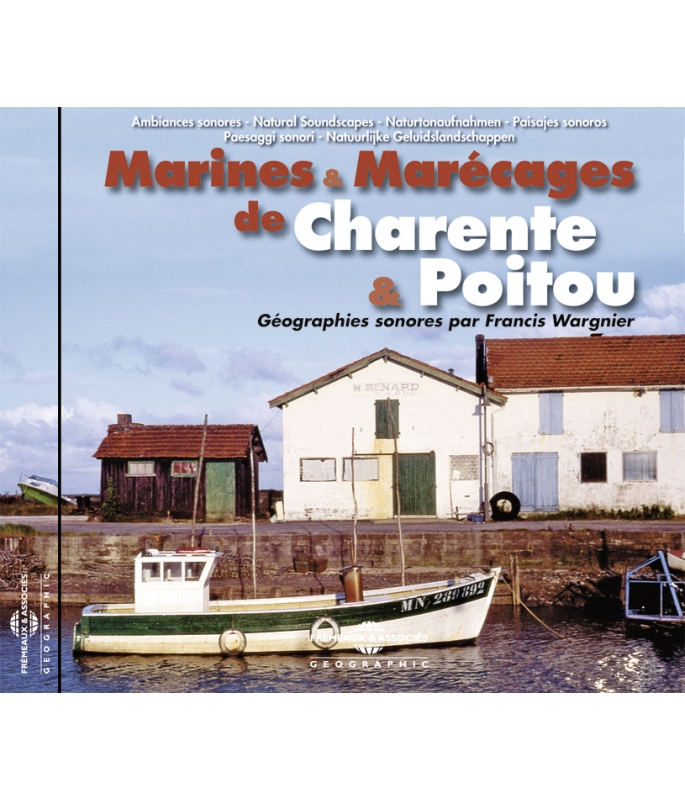
(AMBIANCES NATURELLES)
(AMBIANCES NATURELLES)
Region by region, Frémeaux & Associés Geographic constructs a geography of sounds. It presents the listener with a series of authentic, unaltered landscapes without reconstruction or addition. The approach focuses on natural and technological soundscapes and the way these change with each passing hour or season or as the heavens open. Patrick FRÉMEAUX
Frémeaux & Associés Geographic baut eine Geographie der Töne auf, deren Region die Werkeinheit ist. Die CD bietet dem Gehör eine Folge von authentischen Landschaften, ohne Umwandlung, ohne Rekonstruktion und ohne Hinzufügung. Der Ansatz interessiert sich für unser Besitztum und ist auf natürliche und technologische Tonlandschaften orientiert, ihre Entwicklungen je nach Uhrzeit, Jahreszeit, die Niederschläge…
Frémeaux & Associés Geographic construye una geografía de sonidos, donde la región constituye la unidad de la obra. El disco propone escuchar una serie de paisajes auténticos, sin transformaciones, sin reconstrucciones ni añadidos. El enfoque pretende destacar el patrimonio y está orientado hacia los paisajes sonoros naturales y tecnológicos, y su evolución según la hora, la estación, la climatología…
Frémeaux & Associés Geographic costruisce una geografia dei suoni, la cui regione è l’unità d’opera. Il disco propone all’ascolto una serie di paesaggi autentici, senza trasformazione, ricostruzione o aggiunta. In questi paesaggi... L’approccio è patrimoniale e si orienta verso paesaggi sonori naturali e tecnologici, verso le loro evoluzioni a seconda dell’ora, della stagione, delle precipitazioni atmosferiche...
Fremeaux & Associés Geographic stelt een geografie van geluiden op, waarbij de streek een deel van het oeuvre vormt. Fremeaux & Associés Geographic brengt een opeenvolging van authentieke landschappen ten gehore, zonder vervorming, reconstructie of toevoegingen. De benadering is patrimoniaal en is gericht op natuurlijke en technologische geluidslandschappen, en hun ontwikkeling die afhangt van de tijd, het seizoen, de neerslag…
-
PisteTitleMain artistAutorDurationRegistered in
-
1Marshland night and morningNuit et matin des maraisPaysages sonores00:12:101999
-
2Dune windVent de dunePaysages sonores00:02:341999
-
3Oyster farmsOstreicolePaysages sonores00:07:261999
-
4Morning in the poitevin marshlandMatin du marais poitevinPaysages sonores00:04:191999
-
5Village dawnAube de villagePaysages sonores00:03:211999
-
6Flat-bottomed boat on the poitevin marshUne plate sur le marais poitevinPaysages sonores00:04:331999
-
7September seascapesMarines de septembrePaysages sonores00:04:271999
-
8Vendee plainPlaine vendéennePaysages sonores00:04:231999
-
9Light housePharePaysages sonores00:04:571999
-
10Saltwort windLe vent de la salicornePaysages sonores00:06:331999
-
11Birds, an airplane and frogsDes oiseaux, un avion et des grenouillesPaysages sonores00:04:121999
-
12Heron groveLe bois des héronsPaysages sonores00:04:161999
-
13Oleron silenceSilence d'OléronPaysages sonores00:09:221999
Marines & Marécages de Charente & Poitou
Ambiances sonores - Natural Soundscapes - Naturtonaufnahmen - Paisajes sonoros - Paesaggi sonori - Natuurlijke Geluidslandschappen
Marines & Marécages de Charente & Poitou
Géographies sonores par Francis Wargnier
INDEX
1- NUIT ET MATIN DES MARAIS (12’10)
a) Brouage – 7/06/99 – 22h09.
b) Brouage – 24/05/93 – 21h59.
c) d) Brouage – 6/06/99 – 22h56 – 23h20.
e) Marennes – 24/05/93 – 22h50.
f) g) h) Brouage – 8/06/99 – 5h33 – 5h40 – 6h20.
2- VENT DE DUNE (2’34)
a) Nord de Royan - 30/08/92 – 16h50.
b) Pointe d’Arçay – 5/06/99 – 15h50.
3- OSTRÉICOLE (7’26)
a) Brouage – 30/08/92 – 18h35.
b) c) Brouage - 6/06/99 – 21h05 – 21h 11.
d) La tremblade – 9/06/99 – 9h06.
e) f) La cayenne – 24/05/93 – 11h34 – 11h59. La pointe à Duret (Marennes) – 9/06/99 – 11h14.
4- MATIN DU MARAIS POITEVIN (4’19)
a) b) Arçais – 6/06/99 – 6h14 – 7h27.
5- AUBE DE VILLAGE (3’22)
a) b) c) Arçais – 5/06/99 – 6h24 – 7h07 – 8h.
6- UNE PLATE SUR LE MARAIS POITEVIN (4’34)
a) Arçais – 13/05/93 – 8h41.
b) Coulon – La sotterie – 12/05/93 – 10h32.
c) Arçais – 13/05/93 – 9h05.
7- MARINES DE SEPTEMBRE (4’27)
a) b) Plage du Platin (Royan) – 1/09/92 – 12h16 – 11h53.
c) St-Georges de Didonne – 3/09/92 – 18h10.
8- PLAINE VENDÉENNE (4’23)
a) Est de l’anse de l’aiguillon – 6/06/99 – 10h46.
9- PHARE (4’57)
a) c) Ile de Ré – Phare des baleines – 15/05/93 – 7h14 – 7h08.
b) d) Ile d’Oléron – Phare de Chassiron – 7/06/99 – 16h30 – 25/05/93 – 19h38.
10- LE VENT DE LA SALICORNE (6’33)
Anse de l’aiguillon
a) Pointe aux herbes – 6/06/99 – 14h44.
b) Charron – 6/06/99 – 9h54.
c) d) Ouest digue de 1777 – 6/06/99 – 17h – 17h25.
e) Charron – 6/06/99 – 10h19.
11- DES OISEAUX, UN AVION ET DES GRENOUILLES (4’12)
Réserve Naturelle de Moeze
a) b) 9/06/99 – 16h39 – 17h.
12- LE BOIS DES HÉRONS (4’15)
a) Luzac (Marennes) – 8/06/99 – entre 19h50 et 20h20.
13- SILENCE D’OLÉRON (9’22)
a) Plage des saumonards – 1/09/92 – 18h26.
b) Plage Ouest – 1/09/92 – 16h02.
c) Est de l’Ile d’Oléron – 7/06/99 – 13h07.
d) e) f) foret de st Trojan les bains – 8/06/99 – 11h47 – 17h02 – 12h27.
FRANCAIS
1- NUIT ET MATIN DES MARAIS (12’10) : Les grenouilles attendent la nuit (a)(b). Puis vient le grand concert, qui dure la nuit entière (c)(d)(e).Aux premières lueurs de l’aube, ne restent que quelques fêtards, qui, peu à peu se taisent, laissant les canaux aux ragondins plongeurs (f) et aux poules d’eau (g). L’heure des oies sauvages au vol grinçant, des aigrettes et cigognes silencieuses (h).
2- VENT DE DUNE (2’34) : Dans les oyats, balayés par le sable (a)(b). Grondement de l’océan.
3- OSTRÉICOLE (7’26) : Les clapotis typiques de marée haute dans les ports ostréicoles (a)(b)(c). A la marée descendante, lé départ des pinasses vers les parcs à huîtres (d)(e)(f).
4- MATIN DU MARAIS POITEVIN (4’19) : Le scintillement des peupliers (a) et un tapis de lentilles d’eau après la pluie (b).
5- AUBE DE VILLAGE (3’22) : Pluie matinale (a) et basse cour dans un village du marais poitevin (b). 8h, le soleil est revenu (c).
6- UNE PLATE SUR LE MARAIS POITEVIN (4’34) : Ici, beaucoup d’endroits ne sont accessibles qu’avec des barques plates, en particulier les lieux de silence, domaine des oiseaux. Navigation à la perche (a). Des grenouilles peu farouches (b).Jet d’une nasse à anguilles et navigation à la pelle (c).
7- MARINES DE SEPTEMBRE (4’27) : Ressac sur les rochers (a). Une petite grotte marine (b) et des grognements d’océan (c).
8- PLAINE VENDÉENNE (4’23) : Dans la laine vendéenne ; un avion, une route, les alouettes et un vent léger de buisson (a). vent d’ouest qui fait entendre longtemps les automobiles sous le vent.
9- PHARE (4’57) : Le vent et la pluie au sommet d’un phare (a)(c). réverbération de l’intérieur d’un phare (b). A la pointe de Chassiron, de gros galets modelés par l’océan (d).
10- LE VENT DE LA SALICORNE (6’33) : Paysage de l’anse de l’aiguillon : gargouillis des vers de vase (a), un port mytilicole (b), le vent dans la salicorne (c), un grillon au milieu des herbes rares (d), un clapotis et en vent d’épave envahie par l’herbe (e).
11- DES OISEAUX, UN AVION ET DES GRENOUILLES (4’12) : Dans la réserve naturelle de Moeze, les oiseaux et grenouilles se disputent bosquets et étangs (a)(b). Les tortues restent muettes.
12- LE BOIS DES HÉRONS (4’15) : Hérons et aigrettes ont élu domicile dans un petit bois, à l’est du parc de Marennes (a). Paysage préhistorique.
13- SILENCE D’OLÉRON (9’22) : Parce qu’une île est un concentré de paysages. Ecume (a). Vacarme d’ouest à marée montante (b). Vent dans les tamaris (c). La pinède et un ressac très fin ; paillettes de soleil, paillettes de silence (d)(e)(f).
ANGLAIS
1- MARSHLAND NIGHT AND MORNING (12’10) The frogs await nighttime (a)(b). Then comes the great concert, which lasts the entire night long (c)(d)(e).At the first light of dawn, only a few partygoers are left, who slowly fall quiet, leaving the canals to the diving coypu (f) and moorhens (g). The hour of the wild ducks in their squeaky flight, the silent aigrettes and storks (h).
2- DUNE WIND (2’34) In the sandswept marram grass (a)(b). Growling of the ocean.
3- OYSTER FARMS (7’26) Typical lapping of hight tide in the oyster ports (a)(b)(c). At low tide, the shallops leave for the oyster farms (d)(e)(f).
4- MORNING IN THE POITEVIN MARSHLAND (4’19) The sparkling of the poplars (a) and carpet of duckweed after the rain (b).
5- VILLAGE DAWN (3’22) Morning rain (a) and farmyard in a Poitevin marshland village (b). 8 o’clock, the sun is back (c).
6- FLAT-BOTTOMED BOAT ON THE POITEVIN MARSH (4’34) Here, many places are only accessible in flat-bottomed boats, especially the places where silence reigns, the bird’s domain. Navigation with a pole (a). Friendly frogs (b).Throwing an eel net and navigation with a shovel (c).
7- SEPTEMBER SEASCAPES (4’27) Undertow on the rocks (a). a small underwater cave (b) and the grumbling of the ocean (c).
8- VENDEE PLAIN (4’23) In the Vendée plain : an airplane, a road, larks and slight wind in the bushes (a). West wind that lets you hear the cars leeward for a long time.
9- LIGHT HOUSE (4’57) Wind and rain at the top of a lighthouse (a)(c). Reverberation inside the lighthouse (b). At Chassiron point, large flat pebbles worn away by the ocean (d).
10- SALTWORT WIND (6’33) Landscapes at the anse de l’Aiguillon : mudworms gurgling (a), a mussel port (b), wind in the saltwort (c), a cricket in the middle of rare grasses (d), lapping and wind in a wreck invaded by grass (e).
11- BIRDS, AN AIRPLANE AND FROGS (4’12) In the Moeze nature reserve, birds and frogs fight over thickets and ponds (a)(b). The turtles remain silent.
12- HERON GROVE (4’15) Herons and aigrettes have taken un residence in a small grove to the east of the Marennes Park (a). The landscape is prehistoric.
13- OLERON SILENCE (9’22) Because an island is a concentrate of landscapes. Foam (a). Uproar from the west at high tide (b). Wind in the tamarisks (c). Pine trees and a very soft undertow ; flecks of sunlight, flecks of silence (d)(e)(f).
ALLEMAND
1- NACHT UND FRÜHMORGEN IN DEN SÜMFPEN (12’10) Frösche warten auf die Nacht (a)(b). Dann setzt das große Konzert ein und dauert die ganze Nacht (c)(d)(e).Im ersten Morgengrauen sind nur noch wenige Stimmen der nächtlichen Feiern zu hören, und auch diese verstummen nach und nach, um die Känale den Biberratten (f) und den Wasserhühnern (g) zu überlassen.. Nun ist die Zeit der Wildgänse im schrillen Flug, der schweigsamen Seidenreiher und Storche (h).
2- DÜNENWIND (2’34) Der Sand fegt durch den Strandhafer (a)(b). Das Rauschen des Ozeans.
3- AUSTERNZUCHT (7’26) Das typische Plätschern der Flut in den Austernhäfen (a)(b)(c). Bei ablaufendem Wasser, das Ausfahren der Pinassen zu den Austernparks(d)(e)(f).
4- MORGENS IM MARAIS POITEVIN (4’19) Glitzernde Pappeln (a) und ein Teppich von Wasserlinsen nach dem Regen (b).
5- TAGESANBRUCH IM DORE (3’22) Morgenregen (a) und Hühnerhof in einem Dorf des Marais Poitevin (b). 8 Hur, die Sonne ist wieder da (c).
6- EIN KAHN AUF DEM MARAIS POITEVIN (4’34) Viele Orte sind hier mit ganz flaschen Schiffen erreichbar, insbesondere die stillen Gegenden, Reich der Vögel Kahnfahrt mit der Stange (a). Die Frösche sind gar nicht scheu (b). Wurf eines Aalnetzes und Bootsfahrt mit dem Stechpaddel (c).
7- KÜSTENGEWÄSSER IM SEPTEMBER (4’27) Brandung auf den Felsen (a). Eine klein Meereshöhle (b) und das Rauschen des Ozeans (c).
8- FLACHLAND IN DER VENDÉE (4’23) Im Flachland der Vendée ; ein Flugzeug, eine Landstraße, die Schwalben und ein leichter Wind im Gebüsch(a). Unter dem Westwind sind die Motorengeräusche der Autos lange hörbar.
9- LEUCHTTURM (4’57) Wind und regen an der Spitze eines Leuchtturms (a)(c). Widerhall aus dem Innern eines Leuchtturms (b). An der Pointe de Chassiron spielt der Ozean mit dicken Kieseln (d).
10- DER WIND IN DEN SALZPFLANZEN (6’33) Landschaften in der Anse de l’Aiguillon : das Gurgeln der Wattwürmer (a), ein Muschelzuchthafen (b), der Wind in den Salzpflanzen (c), eine Grille inmitten der wenigen Gräser(d), plätscherndes Wasser und Wind in einen von Gräsern überwurcherten Wrack (e).
11- VÖGEL, EIN FLUGZEUG UND FRÖSCHE (4’12) Im Naturschutzgebiet von Moeze streiten sich Vögel und Frösche um Baumgruppen und Teiche (a)(b). Die Shildkröten bleiben stumm.
12- DER WALD DER FISCHREIHER (4’15) Fisch und Seidenreiher haben sich in einem kleinen Wald östlich vom Parc de Marennes niedergelassen (a). Eine prähistorische Landschaft.
13- STILLE AUF OLÉRON (9’22) Denn eine Insel ist eine Ansammlung vieler Landschaften. Die Gischt (a). Lautes Geräusch von Westen bei auflaufendem Wasser (b). Der Wind in den Tamarisken (c). Der Pinienwald und eine schwache Brandung ; Pailletten der Sonne , Pailleten der Stille (d)(e)(f).
ESPAGNOL
1- MAÑANAS Y NOCHES DE LAS MARISMAS (12’10) Las ranas esperan la noche (a)(b). A su llegada, empieza el gran concierto, que dura toda la noche(c)(d)(e).Cuando se vislumbran las primeras luces del alba, sólo quedan algunos juerguistas, que poco a poco se callan, dejando los canales a los coípos submarinistas (f) y a las gallinas de agua (g). La hora de las ocas salvajes de chirriante vuelo, de las garzotas y de las cigüeñas silenciosas (h).
2- VIENTO DE DUNA (2’34) Con los carrizos, barridos por la arena (a)(b). Fragor del océano.
3- OSTRICOLA (7’26) Los chapoteos tipicos de la marea altea en los puertos ostricolas (a)(b)(c). Con la marea saliente,partida de las pinazas hacia los criaderos de ostras (d)(e)(f).
4- MAÑANAS DE LA MARISMA DE POITOU (4’19) El centelleo de los álamos (a) y un alfombra de lentejas de agua después de la lluvia (b).
5- ALBA DE ALDEA (3’22) Lluvia matinal (a) y aves de corral en una aldea de la marisma de Poitou (b). Las 8h, el sol ha vuelto (c).
6- UNA BATEA EN LA MARISMA DE POITOU (4’34) Aquí, muchos lugares sólo son accesibles, conbarcos chatos, en particular los lugares de silencio, dominio de los pájaros. Navegación con varas (a). Ranas inofensivas (b).Chorro de una nasa de anguilas y navegación con palas (c).
7- MARINAS DE SEPTIEMBRE (4’27) Resaca en los peñascos (a). Una pequeña gruta marina (b) y fragores de océano (c).
8- LLANURA VANDEANA (4’23) En la llanura vandeana, un avión, una carretera, las alondras y un ligero viento de matorral (a). Viento del oeste que hace un largo eco del ruido de los automóviles bajo el viento.
9- FARO (4’57) El viento y la lluvia en la cúspide de un faro (a)(c). Reverberación del interior de un faro (b). En la punta de chassiron, guijarros grandes moldeados por el océano (d).
10- EL VIENTO DEL SALICOR (6’33) Paisaje del arco del aguijón : gorgoteos de gusanos de fango (a) puerto mejillonero (b), el viento en la salicor (c), un grillo entre las hierbas raras (d), un chapoteo y un viento de pecio invalido por la hierba (e).
11- PAJAROS, UN AVION Y RANAS (4’12) En la reserva narural de Moeze, los pájaros y las ranas se disputan bosques y estanques (a)(b). Las tortugas permanecen mudas.
12- EL BOSQUE DE LAS GARZAS (4’15) Garzas y garzotas han elegido como domicilio un pequeño bosque, al este del parque de Marennes (a). Paisaje prehsitórico.
13- SILENCIO DE OLÉRON (9’22) Puesto que una isla es un concentrado de paisajes. Espuma (a). Estrépito del oeste con marea entrante (b). Viento en los tamariscos (c). La pinada y una resaca muy fina; pepitas de sol, pepitas de silencio (d)(e)(f).
ITALIEN
1- NOTTE E MATINO DELLE PALUDI (12’10) Le rane aspettano la notte (a)(b). Poi viene il gran concerto, che dura tutta la notte (c)(d)(e).Alle prime luci dell’alba, non rimane che qualche festaiolo che poco a poco tace, lasciando i canali alle nutrie tuffatrici (f) e alle gallinelle d’acqua (g). L’ora delle oche selvagge dal volo stridente, egrette e cicogne silenziose(h).
2- VENTO DI DUNA (2’34) Nelle ammofile, spazzate dalla sabbia (a)(b). Rombo dell’oceano.
3- OSTREARIO (7’26) I clapotis tipici dell’alta marea nei porti ostreari (a)(b)(c). A marea discendente, la partenza delle pinacce verso i parchi ostreari (d)(e)(f).
4- MATTINO DEL MARAIS POITEVIN (4’19) Lo scintillamento dei pioppi(a) e un tappeto lenticchie d’acqua dopo la pioggia (b).
5- ALBA DI VILLAGIO (3’22) Pioggia mattutina (a) e pollaio in un villaggio del Marais Poitevin (b). Ore 8.00 il sole è tornato (c).
6- UNA CHIATTA SUL MARAIS POITEVIN (4’34) Qui, molti posti sonori sono accessibili soltano in barca, in particolare i luoghi di silenzio, dominio degli uccelli. Navigazione alla pertica (a). Rane socievoli (b).Lancio di una nassa per anguille e navigazione a remi (c).
7- MARINE DI SETTEMBRE (4’27) Risacca sulle rocce (a). Una piccola grotta marina (b) e rombi dell’oceano (c).
8- PIANURA DELLA VENDÉE (4’23) Nella pianura della Vendée ; un aereo, una strada, le allodole e un leggero vento di cespuglio (a). Vento d’ovest che fa sentire a lungo le automobili sotto il vento.
9- FARO (4’57) .Il vento e la pioggia sulla punta di un faro(a)(c). Riverbero dell’interno di un faro (b). Sulla Pointe chassiron, grossi ciottoli modellati dall’oceano (d).
10- IL VENTO DELLA SALICORNIA (6’33) Paesaggi dell’Anse de l’aiguillon : gorgoglii dei vermi nel fango (a), un porto mitilicolo (b), il vento nella salicornia (c), un grillo in mezzo ad erbe rare (d), un clapotis e un vento di relitto invaso dall’erba (e).
11- UCCELLI, UN AEREO E RANE (4’12) Nella riserva naturale della Moeze, gli uccelli e le rane si contendono boschi e stagni (a)(b). Le tartarughe stanno zitte.
12- IL BOSCO DEGLI AIRONI (4’15) Aironi e egrette hanno eletto domicilio in un boschetto, ad est del parco delle Marennes (a). Paesaggio preistorico.
13- SILENZIO D’OLÉRON (9’22) Perché un ‘isola è un concentrato di paesaggi. Schiuma(a). Baccano d’ovest, a marea ascendente (b). Vento nei tamarischi (c). La pineta e una risacca molto fine ; paillette di sole, paillette di silenzio(d)(e)(f).
NEERLANDAIS
1- NACHT EN OCHTEND VAN DE MOERASSEN (12’10) De kikkers wachten tot het nacht wordt (a)(b). dan komt het grote concert, dat de hele nacht duurt (c)(d)(e).Bij het eerste ochtendgloren, blijven er slechts enkele feestgangers over , die langzaamaan zwijgen, en de vaarten aan de moerasbevers (f) en de meerkoeten (g)overlaten. Het uur van wilde ganzen met hun piepende vlucht, stille zilverreigers ein ooievaars(h).
2- DUINWIND (2’34) In de zeehaver, geveegd door het zand (a)(b). Geruis van de oceaan.
3- OESTERCULTUUR (7’26) Het kenmerkende geklots bij vloed in de oesterhavens (a)(b)(c). Bij laagtij, het vertrek van de pinassen naar de oesterbanken (d)(e)(f).
4- OCHTEND IN HET MOERAS POITEVIN (4’19) De fonkeling van populieren (a) en een tapijt van eendekroos na de regen (b).
5- ZONSOPGANG IN HET DORP (3’22) Ochtendregen (a) en dieren op het erf in een dorp in het moeras Poitevin (b). 8u, de zon is teruggenkomen (c).
6- EEN VLET OP HET MOERAS POITEVIN (4’34) Hier zijn veel plaatsen slechts toegankelijk per vlet, in het bijzonder de plaatsen van stilte domein van de vogels . Varen met een boom (a). Weinig schuwe kikkers (b). Het uitzetten van een palingfuik en varen met riemen (c).
7- ZEEGEZICHTEN IN SEPTEMBER (4’27) Branding op de rotsen (a). Eine kleine zeegrot (b) en gegrom de oceaan (c).
8- VLAKTE IN DE VENDÉE (4’23) Op de vlakte van de Vendée ; een vliegtuig, een weg, zwaluwen en een zachte wind in het struikgewas (a). Westenwind waardoor de automobilisten onder de wind lang te horen zijn.
9- VUURTOREN (4’57) Wind en regen boven op de vuurtoren (a)(c). Weerkaatsing van de binnenkankt van een vuurtoren (b). Aan de punt van Chassiron, grote keien gevormd door de oceaan (d).
10- DE WIND VAN DE ZEEKRAAL (6’33) Landschappen van de baai van l’Aiguillon : geborrel van zeepieren (a), een mosselhaven (b), wind in de zeekraal (c), een krekel midden tussen zeldame grassen (d), het geklots en een wind door een door gras overwoekerd scheepswrak (e).
11- VOGELS, EEN VLEIGTUIG EN KIKKERS (4’12) In het natuurreservaat vanMoeze, vogels en kikkers harrewarren om de bosjes en de plassen (a)(b). De schildpadden zwijgen.1
2- HET REIGERBOS (4’15) Reigers en zilverreigers hebben een klein bosje als huis gekozen, ten oosten van het park van Marennes (a). Bijna prehistorisch landschap.
13- STILTE OP OLÉRON (9’22) Omdat een eiland een concentratie van landschappen is. Meerschuim(a). Westentumult bij opkomende vloed (b). Wind in de tamarisken (c). Het pijnbomenbos en een zeer zachte branding; zonnelovertjes, stiltelovertjes (d)(e)(f).
Francis Wargnier
Francis Wargnier, né en 1953, est ingénieur du son et créateur sonore. Saformation est éloquente : étudiant à Louis Lumière, puis au Conservatoire National des Arts et Métiers, au Conservatoire national supérieur de Musique de Paris, Francis Wargnier intègre l’Institut National de l’Audiovisuel en 1976. Il y deviendra responsable du groupe “Son production” et multiplie les créations sonores, pour la télévision, Radio France et l’INA.En 1989, Francis Wargnier introduit la première station de montage son numérique virtuel à l’INA. Six ans plus tard, il mettra en service le premier studio entièrement audionumérique de l’Institut.Depuis l’an 2000, Francis Wargnier s’est spécialisé en “sound design” pour le cinéma, avec pour ambition de développer les travaux du montage son vers la création sonore. La liste des films pour lesquels il a été appelé est pléthorique, tout comme les nominations aux Césars et les récompenses obtenues : nominé pour le meilleur son aux César 2003 comme chef monteur son pour Amen de Costa Gavras, en 2008 pour Le scaphandre et le papillon de Julian Schnabel, jusqu’à la consécration en 2010 pour son travail sur Un prophète, de Jacques Audiard à qui est décerné le prix d’excellence pour sound design de l’European Film Award.Par ailleurs, Francis Wargnier sillonne la France des régions et constitue sa propre banque de données sonores pour en “raconter” les spécificités en sons et ambiances. Le présent disque en est la quintessence, proposée par Frémeaux & Associés Geographic pour permettre au public de s’initier aux paysages sonores d'une région.
CD Marines et Marécages de charente et Poitou © Frémeaux & Associés Droits audio : Frémeaux & Associés - La Librairie Sonore (Producteur initial : Sittelle, Pithys, Collection Allain Bougrain Dubourg ou Ceba) / Ecouter les chants d'oiseaux sur CD : Sons et ambiances naturelles des écosystèmes - Stéreo and digital recording of the natural landscape sound. Natural sound sceneries of écosystems, Voices of the Wild Life. Les droits de cet enregistrement sont protégés par la loi. Pour toute exploitation d’illustration sonore sur CD, DVD, CD-Rom, Télévision, Cinéma, Sites internet, scénographies (théâtre, musées…), l’autorisation et un devis gratuit peuvent être obtenus auprès de Frémeaux & Associés – fax : +33 (0)1 43.65.24.22 info@fremeaux.com
